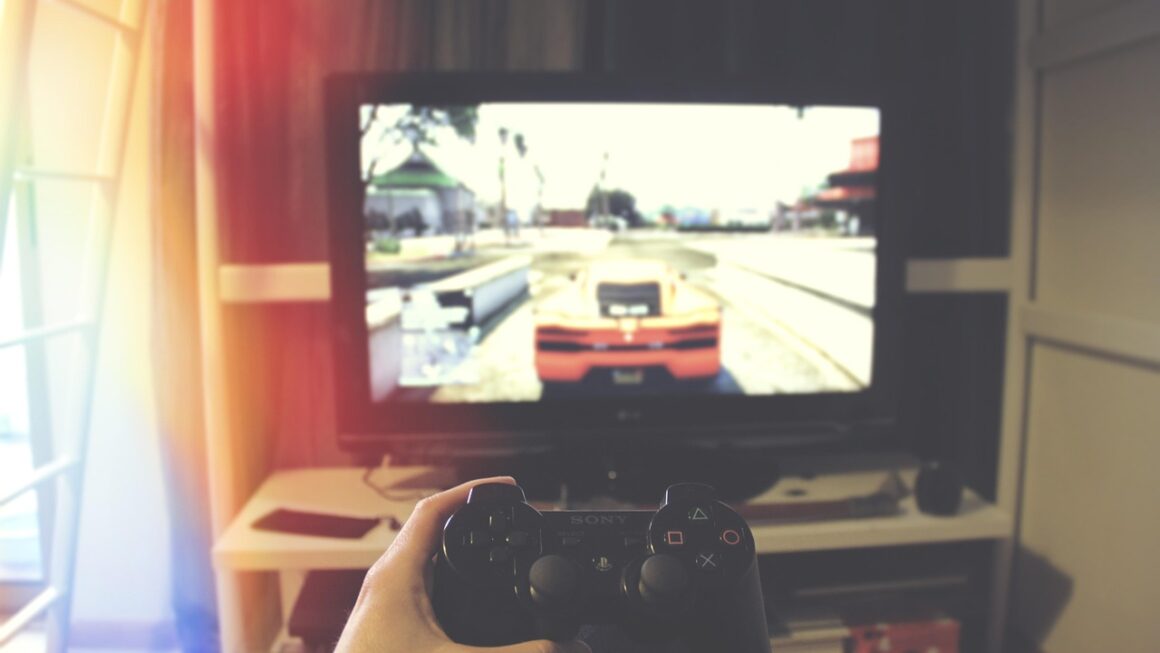Gaming PCs offer a gateway to immersive worlds, stunning visuals, and unparalleled performance that consoles simply can’t match. From customizing every component to achieving frame rates that melt your eyeballs, the allure of a gaming PC is undeniable. But building or buying one can feel daunting. This guide will demystify the world of gaming PCs, helping you understand what makes them tick, how to choose the right components, and ultimately, how to unlock the ultimate gaming experience.
Why Choose a Gaming PC?
Gaming PCs aren’t just about playing games; they’re about the freedom to tailor your experience. The level of control and customization offered is unmatched. Consider the difference between a pre-set console and a PC where you decide everything from the CPU and GPU to the cooling system and aesthetic design.
Unmatched Performance and Visuals
- Higher Frame Rates: Gaming PCs routinely achieve frame rates exceeding 60 FPS, often reaching 144 FPS or higher, especially with higher-end components. This results in smoother, more responsive gameplay. Consoles, while improving, often target 30-60 FPS.
- Superior Graphics: PC gaming allows you to crank up graphical settings to ultra-high, rendering games in breathtaking detail. You can enjoy advanced features like ray tracing and DLSS (Deep Learning Super Sampling) for enhanced visuals and performance, technologies that are often limited or less effective on consoles.
- Higher Resolutions: Gaming PCs can handle resolutions like 1440p (QHD) and 4K with ease, offering significantly sharper and more detailed images than the standard 1080p found on many consoles.
Customization and Upgradability
- Component Selection: You choose every component in your system, from the CPU and GPU to the RAM, storage, and cooling system. This level of control allows you to optimize your PC for specific games or applications.
- Easy Upgradability: Unlike consoles, which are essentially fixed platforms, gaming PCs can be upgraded over time. As new technologies emerge, you can simply swap out components to keep your system up-to-date. For example, upgrading your GPU can significantly boost performance in newer titles.
- Personalization: Customize the aesthetic of your PC with RGB lighting, custom cases, and personalized water cooling solutions. This allows you to create a system that reflects your individual style.
Versatility Beyond Gaming
- Multitasking Capabilities: Gaming PCs are powerful workstations capable of handling demanding tasks like video editing, graphic design, and software development.
- Productivity Powerhouse: Easily switch between gaming and productivity applications without compromising performance. A powerful CPU and ample RAM make multitasking seamless.
- Software and Application Support: PCs offer access to a wider range of software and applications than consoles, expanding their utility beyond gaming.
Key Components of a Gaming PC
Understanding the key components of a gaming PC is crucial for making informed decisions when building or buying one. Each component plays a vital role in overall performance.
Central Processing Unit (CPU)
- Role: The CPU is the “brain” of your PC, responsible for processing instructions and performing calculations.
- Impact on Gaming: A powerful CPU ensures smooth gameplay, especially in CPU-intensive games like strategy titles and simulations.
- Examples: Intel Core i5, i7, and i9 processors and AMD Ryzen 5, 7, and 9 processors are popular choices for gaming PCs. Generally, higher core counts and clock speeds translate to better performance.
Graphics Processing Unit (GPU)
- Role: The GPU is responsible for rendering images and displaying them on your monitor.
- Impact on Gaming: The GPU is arguably the most important component for gaming, directly impacting frame rates and visual fidelity.
- Examples: NVIDIA GeForce RTX and AMD Radeon RX series GPUs are the dominant players. Consider the resolution and refresh rate of your monitor when choosing a GPU. For example, a GeForce RTX 3060 or Radeon RX 6600 is suitable for 1080p gaming at high settings, while a GeForce RTX 3070 or Radeon RX 6700 XT is better suited for 1440p gaming.
Random Access Memory (RAM)
- Role: RAM is used to store data that the CPU and GPU need to access quickly.
- Impact on Gaming: Sufficient RAM prevents stuttering and slowdowns, especially when multitasking or running demanding games.
- Recommended Amount: 16GB of RAM is generally considered the sweet spot for gaming. 32GB may be beneficial for users who frequently stream or run multiple applications simultaneously.
Storage (SSD and HDD)
- Solid State Drive (SSD): SSDs offer significantly faster read and write speeds compared to traditional HDDs, resulting in quicker boot times, faster game loading, and improved overall system responsiveness.
- Hard Disk Drive (HDD): HDDs are more affordable per gigabyte and are suitable for storing large files like movies, music, and less frequently played games.
- Recommendation: A combination of an SSD for the operating system and frequently played games and an HDD for mass storage is often the ideal solution. A 500GB or 1TB SSD is a good starting point.
Motherboard
- Role: The motherboard connects all the components of your PC together.
- Considerations: Choose a motherboard that is compatible with your CPU, RAM, and other components. Consider features like PCIe slots for expansion cards, M.2 slots for NVMe SSDs, and USB ports.
Power Supply Unit (PSU)
- Role: The PSU provides power to all the components in your PC.
- Importance: Choose a PSU with sufficient wattage to handle all your components, with some headroom for future upgrades. A good quality PSU will also protect your components from power surges. Use a PSU calculator to estimate the wattage required for your system.
Cooling System
- CPU Cooler: Keeps the CPU from overheating. Options include air coolers and liquid coolers (AIOs).
- Case Fans: Help to circulate air within the case, keeping all components cool.
- Importance: Proper cooling is essential for maintaining stable performance and preventing damage to your components.
Building vs. Buying a Gaming PC
Deciding whether to build your own gaming PC or buy a pre-built system is a crucial decision. Both options have their advantages and disadvantages.
Building Your Own PC
- Pros:
Customization: You have complete control over every component in your system.
Cost Savings: Building your own PC can often be more cost-effective than buying a pre-built system, especially if you shop around for deals.
Knowledge and Skills: Building a PC is a rewarding experience that teaches you about computer hardware.
- Cons:
Time and Effort: Building a PC can be time-consuming and requires research and careful planning.
Troubleshooting: If something goes wrong, you’re responsible for diagnosing and fixing the problem.
Warranty: Each component typically has its own warranty, which can be more cumbersome to manage than a single warranty for a pre-built system.
Buying a Pre-Built PC
- Pros:
Convenience: Pre-built systems are ready to go out of the box, saving you time and effort.
Warranty and Support: Pre-built systems typically come with a comprehensive warranty and technical support.
Professional Assembly: Pre-built systems are assembled by professionals, ensuring proper component installation and cable management.
- Cons:
Limited Customization: You have less control over the components in a pre-built system.
Potentially Higher Cost: Pre-built systems can be more expensive than building your own PC.
Potential for Bloatware: Some pre-built systems may come with pre-installed software that you don’t need or want.
Essential Peripherals for Gaming
A great gaming PC deserves equally great peripherals to enhance your gaming experience.
Monitor
- Resolution: Consider the resolution of your monitor (1080p, 1440p, 4K). Higher resolutions offer sharper and more detailed images.
- Refresh Rate: The refresh rate (measured in Hz) determines how many times the monitor updates the image per second. Higher refresh rates (144Hz or higher) result in smoother gameplay.
- Response Time: The response time (measured in milliseconds) is the time it takes for a pixel to change color. Lower response times minimize ghosting and blurring.
Keyboard and Mouse
- Mechanical Keyboards: Mechanical keyboards offer tactile feedback and greater durability compared to membrane keyboards.
- Gaming Mice: Gaming mice often feature adjustable DPI (dots per inch) for precise tracking and programmable buttons for customizable commands.
- Ergonomics: Choose a keyboard and mouse that are comfortable to use for extended gaming sessions.
Headset
- Sound Quality: Look for a headset with clear and immersive sound quality for realistic audio cues.
- Comfort: Choose a headset with comfortable earcups and an adjustable headband for long-lasting comfort.
- Microphone: A good quality microphone is essential for communicating with teammates.
Conclusion
Building or buying a gaming PC is a significant investment, but the rewards are well worth it. The superior performance, unparalleled customization, and versatility of a gaming PC offer an unmatched gaming experience. By understanding the key components, weighing the pros and cons of building vs. buying, and choosing the right peripherals, you can create a gaming setup that will provide you with years of enjoyment. Whether you’re a seasoned gamer or just starting out, the world of PC gaming awaits. Embrace the freedom, the power, and the endless possibilities!




